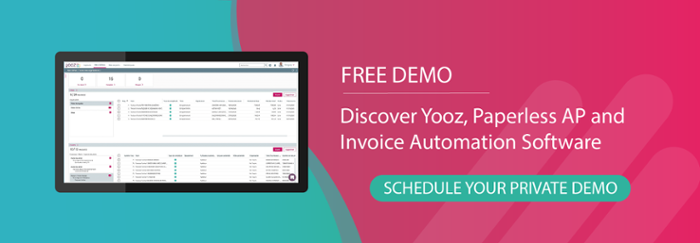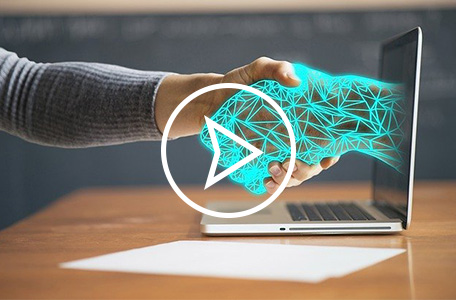Despite technology being at the forefront of everyone's fingertips these days, it seems like some businesses still haven’t got the (digital) memo.
80 percent of EU companies are still sending paper invoices, according to Eurostat, which means there’s still a vast majority of businesses out there that are wasting precious hours scanning, sending, processing, and storing financial documents.
And while accounts payable automation and integration of electronic invoices, or e-Invoices, is not necessarily a brand new concept to those businesses, there is still some confusion surrounding these concepts.
To help accounting teams, we’ve looked at what exactly an e-Invoice is, the benefits of e-Invoicing, and why businesses should look to adopt e-invoicing software to transform their accounts payable processes.
What is e-Invoicing?
Like the name suggests, an e-Invoice is simply an electronic version of a physical, paper-based invoice, but it can also be used to describe the way in which invoices between a supplier and a buyer are exchanged in a digital platform.
However, not all invoices are made the same, and just because an invoice was sent or received electronically doesn’t always mean it is an e-Invoice. For example, an invoice sent as a PDF uses unstructured data and therefore would not count as an e-Invoice.
e-Invoices on the other hand use structured data — such as markers and tags to separate elements including tax codes, supplier address, or total cost — and are issued using Electronic Data Interchange (EDI) or XML formats.
Because these documents use structured data, e-Invoice software and processing tools are able to automatically validate, manage, store and prepare them for payment - providing an almost completely touchless process.
As soon as the supplier’s e-Invoicing software receives a receipt of goods ordered, the system automatically scans and transforms the e-Invoice into the preferred file type - such as XML or CSV. It then transfers the file to both the supplier’s and the customer’s e-Invoicing software for a secure and accurate system of record.
By converting the e-Invoice, both the supplier and the customer can adhere to their respective standards for compliance and auditing without manually changing anything. Plus, as e-Invoices are issued through EDI, they can be transmitted using any method agreed to by the sender and the recipient - such as through an email, web browser, portal, or mobile.
How does e-Invoicing help with compliance?
There are several EU regulations regarding e-invoicing - the first one dating back to the European Directive of 2010 which stated that the digitalisation of invoices is no longer unavoidable, simply by using an electronic software platform for audit trail.
Then there’s the European Directive of 2014, which paved the way for and encouraged the use of e-Invoicing - setting standardisation rules for digital invoices which member states had to comply with by April 2019. The legislation obliged public administration entities to be able to receive and process e-Invoices sent by their suppliers in the public procurement processes.
Prior to 2014, various e-Invoice formats were used across the EU which meant organisations required additional time, costs, and resources to process invoices - hence the EU’s decision to optimise this process and why automated e-Invoicing software has become the go-to solution for invoice processing.
However, it’s important to note that the 2014 Directive does not necessarily require organisations to adopt e-Invoicing. Though many countries are shifting towards digital invoices, some are still accepting paper invoices. Under the 2014 Directive, the big difference is organisations are required to accept and process e-Invoices that meet the new standards.
What is the e-Invoicing situation in Luxembourg?
Despite EU legislation in place, just one in five (20%) companies in Luxembourg are ready for electronic invoicing, according to a study commissioned by Yooz.
Indeed, when it comes to digital maturity, Luxembourg ranks just inside the top half of the table, 19th out of 38 countries according to the EU’s Digital Economy Index. Not bad, but it definitely could do better.
In terms of e-Invoicing legislation, the Luxembourg government published the first regulation about Electronic invoicing in public procurement in May 2019 that obliged organisations to receive and process electronic invoices from central public sector bodies. As of April 2020, sub-central government entities are also mandated to receive and process compliant e-Invoices.
In January 2021, the Luxembourg government launched a modification of the May 2019 directive that triggered the launch of electronic invoicing in Public Procurement, pushing forward the PEPPOL (Pan-European Public Procurement OnLine) network which allows organisations to exchange electronic business documents, such as e-Invoices, through a highly secured and international network.
There are two major adjustments with the PEPPOL network that are worth mentioning for organisations in Luxembourg:
- 4 BIS: all companies need to allow sending and receiving of electronic invoices with public procurement organisations.
- 4 TER: all companies need to use the PEPPOL network to send and receive electronic invoices through the dedicated portal: myguichet.lu.
The implementation of this law will happen in three stages, with big companies having to be compliant by September 2021, medium-sized businesses by February 2022, and small businesses by July 2022.
For organisations in Luxembourg, the PEPPOL network brings with it significant opportunities to bring forward digital and automated invoice processing technologies. Electronic invoices can be created and downloaded in the dedicated portal, while companies can have their own PEPPOL access point and can rent this out to dedicated suppliers to ease the accounts payable process.
What are the benefits of e-Invoicing software?
Traditional invoicing using manual, paper-based processes are time-, cost-, and resource-intensive, while also being prone to human error and an increased risk of fraud.
e-Invoicing is much more reliable, scalable and sustainable. Not only can e-Invoices reduce data entry errors, shorten processing times, and use up far less paper, they can also be combined with automation and e-Invoicing software to further improve efficiency.
Also, because the information can be viewed across systems, wherever, whenever, it’s easier for your accounts payable team to collaborate on invoices, manage cash flow, escalate payments (or non-payments), optimise their working day, eliminate errors and tackle fraud.
Overall, there are six key benefits of utilising e-Invoicing :
- Reduce the average time taken to handle and process invoices from around 12 days to just three - a 75% reduction
- Reduce costs of manually handling invoices from around £1 per invoice to just 25p - another 75% reduction
- Reduce error - while companies using manual processes have to deal with one in every four invoices flagged for review, e-Invoicing software reduces this to one in 10
- Reduce fraud and increase security through the use of three-way matching
- Reduce the strain on suppliers and vendors with a system that can automatically handle and take care of e-Invoices
- Reduce barriers and increase visibility into the invoice processing cycle with real-time data and reporting
Want to learn more about these software and how they can increase your e-Invoicing efficiency? This webinar, in association with the Accountancy Age and Financial Director, intends to give clarity on the ongoing regulations affecting the AP function and provide you with advice on how to comply with the right measures and the right tools.






